Nonerz said:
I'm no expert...but you're wrong.
from:
Explosive Lifting for Sports
by Harvey Newton
great book
I'm curious what kind of experience you have and what type of training you do.
First of Nonerz, thank you for contributing so thoughtfully to this thread. Harvey Newtons book is a very good introduction to olympic weightlifting and its benefits in other sports. I also believe that oly lifting has the most to offer any athlete in terms of developing explosive speed and strength, as well as excellent flexibility throughout full ranges of motion.
And yes, the bar trajectory in the clean ends up being an elongated S curve, but, we do not aim for an S curve. We aim for a straight trajectory by keeping the bar as close and as vertical as possible throughout the lift. It is virtually impossible to lift the bar at a perfect 90 degree angle, but again, the goal is to get as close as possible. The mechanics and alignment of our bodies, as well as our flexibility and technique will dictate how close each of us can get to the ideal bar trajectory. And, starting out with the bar as close to the body is the ideal starting point if our goal is to keep the distance as short as possible, as well as focus all the energy into lifting the bar up, rather than back and forth. I actually brought up and discussed the S curve issue in post # 16 on this thread, and I adress some of my experience as well. I guess you missed it?

But back to the deadlift: in that lift as well, we aim for the shortest trajectory, and keeping the bar as close to the body during the entire lift is how we do it. To illustrate my point even better, consider the trap bar deadlift. Due to the construction of the bar, one can actually deadlift along the ideal bar trajectory, because the trap bar loops around the body. Trap bar deadlifts are much easier ton perform precisely because you dont have to worry about keepig the bar close, its already there, and the shortened distance allows lifters to lift more than they can in the conventional deadlift.


 Please Scroll Down to See Forums Below
Please Scroll Down to See Forums Below 











